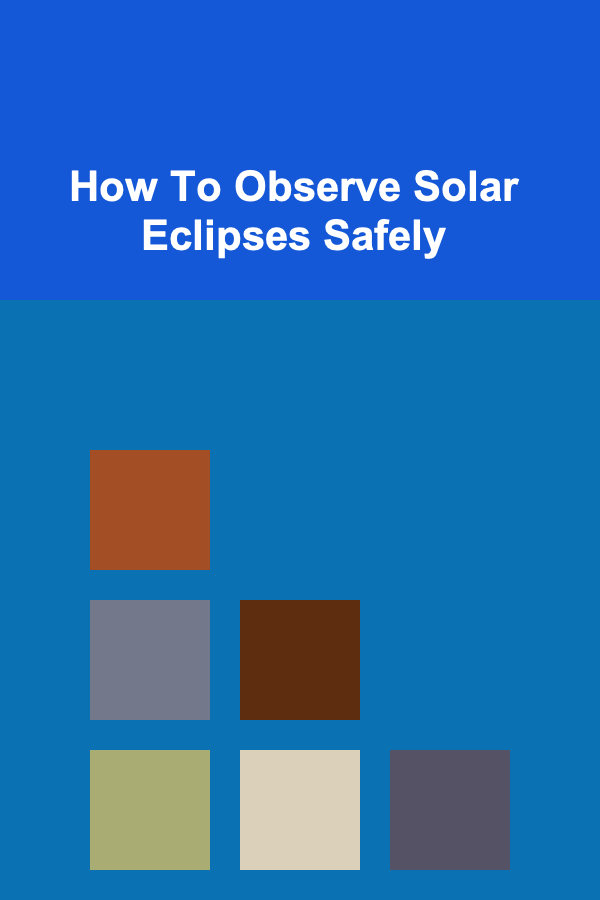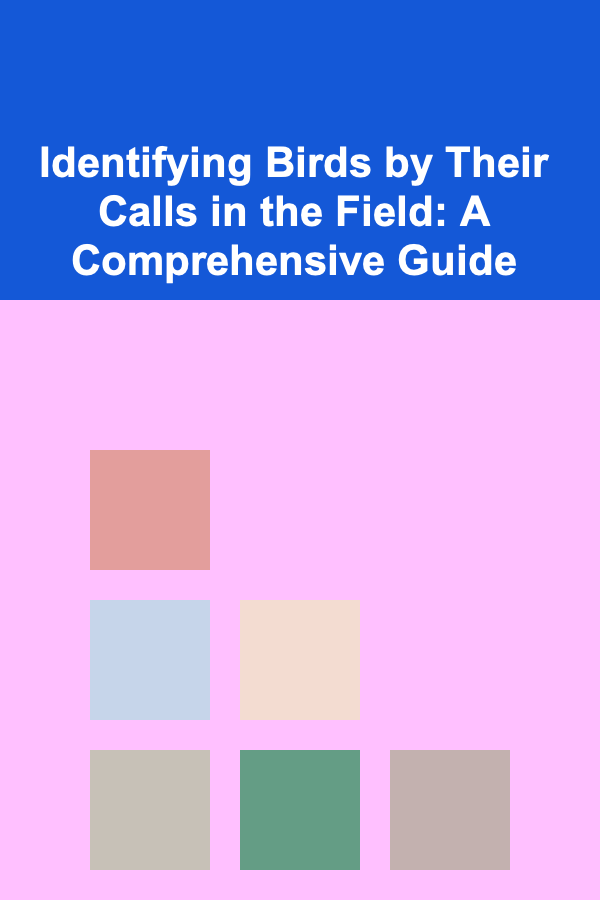
How To Observe Solar Eclipses Safely
ebook include PDF & Audio bundle (Micro Guide)
$12.99$9.99
Limited Time Offer! Order within the next:

Solar eclipses are awe-inspiring natural phenomena that capture the attention of observers worldwide. Whether it's the total obscuration of the Sun by the Moon or a partial eclipse, the spectacle can be both beautiful and humbling. However, observing a solar eclipse requires caution, as it can cause permanent damage to the eyes if done improperly. In this article, we will explore the importance of observing solar eclipses safely, the potential risks involved, and the best practices for enjoying this celestial event without harm.
Understanding Solar Eclipses
A solar eclipse occurs when the Moon passes directly between the Earth and the Sun, blocking out some or all of the Sun's light. There are three main types of solar eclipses:
- Total Solar Eclipse: The Moon completely covers the Sun, casting a shadow on Earth. During this rare event, the Sun's corona (outer atmosphere) becomes visible.
- Partial Solar Eclipse: Only a portion of the Sun is obscured by the Moon. This is more common than a total eclipse.
- Annular Solar Eclipse: The Moon is farther from Earth in its orbit, so it doesn't completely cover the Sun, resulting in a "ring of fire" effect around the dark disk of the Moon.
While solar eclipses are visually stunning, they can be dangerous if observed incorrectly. The Sun's intense rays can severely damage the eyes, leading to vision impairment or even permanent blindness. Therefore, understanding how to observe solar eclipses safely is crucial for anyone wanting to enjoy this cosmic event.
The Risks of Viewing Solar Eclipses
The Sun emits powerful ultraviolet (UV) radiation, which can cause serious harm to the eyes. When you look directly at the Sun without protection, this radiation can burn the retina, the light-sensitive tissue at the back of the eye. This damage, known as solar retinopathy, can result in permanent vision loss. The risks are especially high during a solar eclipse because people may be tempted to look at the Sun directly, as the light may seem less intense when it's partially obscured.
Why the Risk is Greater During a Solar Eclipse
During a solar eclipse, the brightness of the Sun is reduced, making it easier for the eyes to tolerate looking at the Sun. However, the intensity of solar radiation remains the same, and the damage it causes is cumulative. It is important to note that even during a partial eclipse, when only a portion of the Sun is obscured, the unshielded part of the Sun's surface can still cause damage to the eyes. In totality, the brief period when the Moon completely covers the Sun, it may seem safe to look at the eclipse with the naked eye, but it's critical to know the exact timing of this phase to avoid exposure to harmful UV rays.
Safe Viewing Techniques
The key to observing a solar eclipse safely is to use the right equipment and techniques. Here are several methods that will allow you to enjoy the event without damaging your eyes:
1. Solar Eclipse Glasses
One of the safest and most widely used methods for observing a solar eclipse is through solar eclipse glasses. These glasses are specifically designed to block out harmful UV and infrared radiation, allowing you to look directly at the Sun without risking eye damage.
Features of Solar Eclipse Glasses:
- ISO 12312-2 Certification: Always check for this certification, which ensures that the glasses meet international standards for safe solar observation.
- Darkness: Solar eclipse glasses are significantly darker than regular sunglasses, filtering out enough light to protect your eyes.
- No Scratches: Ensure the glasses are free from scratches, as any damage can reduce their effectiveness.
Solar eclipse glasses should never be used if they are damaged, scratched, or torn, as they may no longer provide adequate protection. Additionally, make sure the glasses fit snugly on your face and that they are properly sealed to prevent any stray light from entering.
2. Pinhole Projector
A pinhole projector is a simple and effective way to observe a solar eclipse indirectly. This method involves projecting the image of the Sun onto a surface, allowing you to view it without looking directly at the Sun.
How to Create a Pinhole Projector:
- Take a piece of cardboard or any opaque material and make a small hole (about 1-2 mm in diameter) in the center.
- Hold the cardboard so that sunlight passes through the hole and falls onto a flat surface, such as the ground or a white piece of paper.
- As the eclipse progresses, you will be able to see the image of the Sun projected onto the surface.
This method is safe because it prevents direct exposure to the Sun's rays, allowing you to observe the eclipse without risking eye damage.
3. Solar Filters for Telescopes and Binoculars
If you want to view the solar eclipse through telescopes or binoculars, you must use solar filters specifically designed for this purpose. Regular lenses or filters are not safe for direct solar observation. Solar filters are made of specially coated materials that block harmful radiation and reduce the brightness of the Sun to a safe level.
Important Tips for Using Solar Filters:
- Never use sunglasses, CDs, DVDs, or any other makeshift filters. These items do not offer sufficient protection and can cause serious harm to your eyes.
- Attach the solar filter securely to the front of the telescope or binoculars. Do not attempt to use these devices without proper solar filters, as they could lead to irreversible eye damage.
- Always check the solar filter before use for any damage or cracks.
4. Specialized Solar Viewing Projectors
Another option for safe viewing is a solar viewing projector, which works by projecting an image of the Sun onto a screen. These projectors are available commercially and allow multiple people to view the eclipse at the same time without looking directly at the Sun.
These devices generally have built-in filters that ensure the safety of the viewers. They are a good option for schools, public events, or groups who want to observe the eclipse together.
5. Use of Solar Telescopes
For a more advanced and professional experience, you can use specialized solar telescopes. These telescopes are equipped with specific filters and optics designed for solar observation. They offer detailed views of the Sun, including solar flares, sunspots, and the Sun's corona. Solar telescopes should only be used if they have been designed specifically for solar observation.
What to Avoid When Viewing a Solar Eclipse
While it is possible to observe a solar eclipse safely with the right precautions, there are several common mistakes and practices that should be avoided:
1. Do Not Look Directly at the Sun Without Protection
Under no circumstances should you look directly at the Sun without proper protection. Even during an eclipse, the Sun's rays are still powerful enough to cause irreversible damage to the retina. Always use eclipse glasses or other approved safety equipment.
2. Do Not Use Regular Sunglasses
Regular sunglasses, no matter how dark, do not provide sufficient protection against the Sun's rays. Sunglasses do not block the necessary amount of ultraviolet radiation and can give you a false sense of security. Only solar eclipse glasses or solar filters designed for direct viewing should be used.
3. Do Not Use Poor-Quality or Homemade Filters
It is tempting to create homemade solutions, such as using CDs or DVDs, to view a solar eclipse. However, these items are not safe and do not provide adequate protection. Only use certified eclipse glasses, solar filters, or other products specifically designed for solar observation.
4. Do Not View the Eclipse Through Unfiltered Telescopes or Binoculars
Never attempt to view a solar eclipse through unfiltered telescopes or binoculars. These instruments magnify the Sun's light, which can cause severe damage to the eyes in a matter of seconds.
Conclusion
Solar eclipses are some of the most captivating natural events, offering a rare opportunity to witness the intricate dance of the Sun, Moon, and Earth. However, it is essential to take the necessary precautions to ensure that your viewing experience is safe. The risks of permanent eye damage are real, but by using proper eye protection such as eclipse glasses, solar filters, or indirect viewing methods like pinhole projectors, you can safely enjoy the beauty of the eclipse without compromising your vision.
Remember, the key to observing a solar eclipse safely is to respect the power of the Sun and use the right tools and techniques. Whether you're watching a partial eclipse or the rare total solar eclipse, take the time to protect your eyes and enjoy the moment responsibly.

How to Educate Clients on Healthy Eating Habits and Food Choices
Read More
How to Save Money with DIY Haircuts and Styling Techniques
Read More
How To Create a Learning Plan for Success
Read More
Understanding and Managing Post-Traumatic Stress Disorder (PTSD)
Read More
Identifying Birds by Their Calls in the Field: A Comprehensive Guide
Read More
How to Crochet Waterproof Crochet Bags
Read MoreOther Products

How to Educate Clients on Healthy Eating Habits and Food Choices
Read More
How to Save Money with DIY Haircuts and Styling Techniques
Read More
How To Create a Learning Plan for Success
Read More
Understanding and Managing Post-Traumatic Stress Disorder (PTSD)
Read More
Identifying Birds by Their Calls in the Field: A Comprehensive Guide
Read More